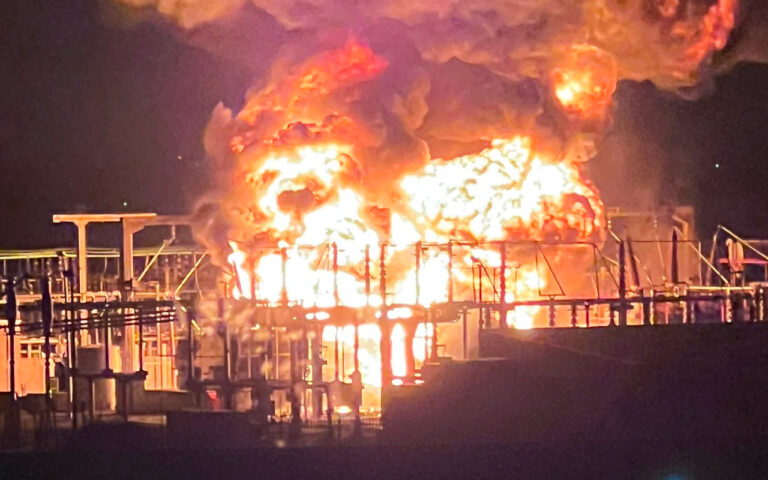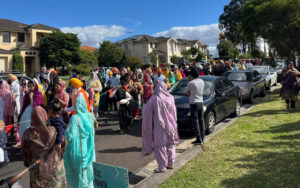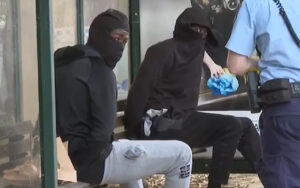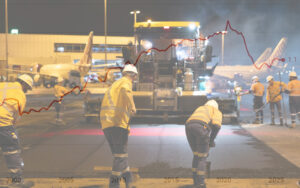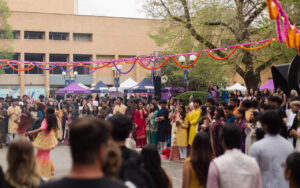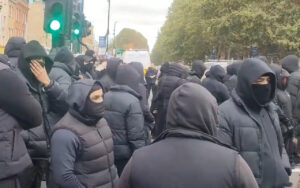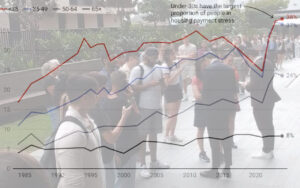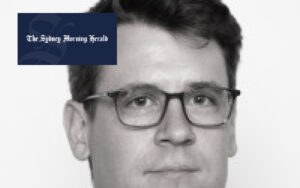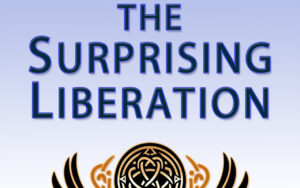A top academic has released the second of a two-part series warning of impending civil war within western societies, in which he predicts major cities will become ungovernable and implores statesmen to recognise the “clear and present” danger.
David Betz, a professor of War Studies at King’s College London, published his initial piece in Military Strategy Magazine in 2023. Titled Civil War Comes to the West, Betz’s article gained a wide prominence via the ideas themselves and Betz’s development of them on a series of popular podcasts.
Betz’s article warned that civil conflict is “likely to dominate” the West in coming years. This is the case as a number of Western nations are showing conditions “indicative of incipient civil war”, primarily due to the West’s decades-long experiment in multiculturalism and the fracturing of society along ethno-racial lines.
Multiculturalism, Betz notes, has eroded the notion of a coherent national community in Western states as each “particular racial, religious, ethnic, social, or cultural identity tend to promote their own specific interests or concerns without regard to the interests or concerns of any larger political group”.
An assortment of Western nations, therefore, are on a path towards civil conflict, population displacement and some form of balkanisation or dissolution.
In his latest piece Betz focuses less on the causes of civil conflict and more on the form the conflict will take. Betz also outlines strategies that may be employed to minimise or mitigate the damage that will ensue.
Primarily, Betz focuses on four main phenomena that will occur as the West descends into anarchy.
The first and main effect is the growing prevalence of chaotic or ungovernable urban areas, or what Betz dubs “feral cities”.
These are the end products of the multicultural project undertaken by western elites and which now sees these same elites facing “structural civilisational distress” and “squandered legitimacy” as they lose “the ability to peacefully manage multicultural societies that are terminally fractured by ethnic identity politics”.
Regarding a definition of feral cities, Betz, citing the academic literature, describes them as urban areas “with a population of more than a million people in a state the government of which has lost the ability to maintain the rule of law within the city’s boundaries.”
Betz also includes a traffic light typology of green (non-feral), amber (partially feral) and red (actively feral) to illustrate varying levels of ferality. As Betz informs us, in 2003 the “exemplary feral city” was Mogadishu, Somalia.
Now, however, a number of Western cities are displaying the same Somali-like features of amber and red ferality. These include “high levels of political corruption, negotiated areas of police control if not outright no-go zones, decaying industries, crumbling infrastructure, unsustainable debt, two-tier policing, and the burgeoning of private security”.
What makes our circumstance worse is that none of this is likely to improve, and Betz writes: “The direction of the situation, moreover, is decisively towards greater ferality.”
In fact, “things are manifestly worsening” and are going to get worse still within five years. This, Betz explains, is largely due to the urban-rural divide described in his initial article and the related difference in ethnic homogeneity between the two areas.
Betz reiterates that a key factor is the “urban versus rural dimension of the coming conflicts which, in turn, is a result of migrant settlement dynamics. Simply put, the major cities are radically more diverse and have a growing mutually hostile political relationship with the country in which they are embedded”.
This is likely to be exacerbated by attacks on critical infrastructure such as gas, electricity and transport systems, as most of the infrastructure networks sustaining urban populations are located in or pass through rural areas.
Indeed, adding attacks on rural infrastructure to ungovernable urban areas leads us to an increasingly combustible situation and results in a sobering prediction.
These conflicts, Betz writes, will unfold as follows: “First, the major cities [will] become ungovernable, i.e., feral, exhausting the ability of the police even with military assistance to maintain civil order, while the broader perception of systemic political legitimacy plummets beyond recovery.”
This will occur alongside an economic system that has become “crippled by metastasising intercommunal violence and consequent internal displacement”.
This will result in the West’s newly feral cities being seen “by many of those indigenes of the titular nationality now living outside them as effectively having been lost to foreign occupation”.
Such a view will precipitate attacks by rural-based inhabitants on “the exposed city support systems with a view to causing their collapse through systemic failure”.
As evidence of this already occurring, Betz cites recent arson and sabotage attacks on rail and communication networks in France and the “Blade Runner” vigilante attacks in London. He also includes an electoral map of France that illustrates the immense urban-rural split in support for anti-status quo parties like Marine Le Pen’s National Rally (rural areas overwhelmingly support such parties while the country’s urban areas actively oppose them).
Such a fracture is not only seen in France, of course. Indeed, the country is a proxy for the West writ large and the professor notes that similar maps could be made for many other western countries.
The chief cause of this tension, to repeat, is the multiculturalism that has dominated Western societies.
Betz writes that our coming civil conflicts are “a logical conclusion of standard, well-understood precepts of social science. The likely fracture of multicultural societies along lines of identity is an obvious hypothesis”.
In fact, leftist protest to the contrary, the social disintegration of Western states is already an observable reality. As Betz writes, the current “configuration of demographic geography, and the factional polarisation that is its political consequence, is a measurable fact.”
This is plainly not a pleasant topic to discuss, yet Betz insists “it is not controversial as far as our grasp of current reality and theoretical understanding of how societies function is concerned”, and notes that “numerous major Western cities are perceived increasingly as alien to and parasitic of the nations in which they are embedded”.
The second key consequence Betz notes of our coming civil conflict concerns “cultural capital”.
Betz divides this into two dimensions. The first concerns our current “culture wars”, while the second is a series of recommendations related to preserving our cultural heritage.
As Betz explains, attacks against monuments, statues and icons within Western states are not peripheral but central to civil conflict as such. Indeed, these acts have a “time-honoured strategic function”. Among other reasons, the destruction of such symbols serves to increase “in-group bonding capital” and to make it harder for the society to return to the status quo ante.
Iconoclasm is therefore of key import. As Betz writes, smashing the symbols of one’s enemy is a “central element of strategic messaging” and states “there is no surer way to demonstrate the demise of one social order and its replacement with another”. This is why, to use Betz’s examples, the ‘”Hebrews obliterated Canaanite shrines” and the “Taliban exploded the Bamiyan Buddhas”.
We should therefore take our current culture wars extremely seriously as “manifestations of deep conflicts that have the potential to become violently actual”. In support of this, Betz cites observations that note there is “no remedy but force” between incompatible groups, and the mere fact that the civil discussion that once characterised disagreements between our opposing parties has given way to “exhaustion”.
Give these developments, Betz outlines a range of recommendations for ensuring that the West’s cultural treasures are secured.
Actions such as establishing a “special service for the undertaking of cultural protection” and the secure storage of vulnerable cultural works are recommended.
The final two features Betz notes concern “secure zones” and “failed states and fissile materials”.
The first is straightforward. As civil wars by their nature cause civilian displacement, what planners should do is establish secure zones that would house some of our most highly educated and capable, and would help ensure that a “degree of normal civil life might persist”.
The zones should be as large as possible yet remain “defendable by whatever fraction of the pre-war regular forces remain loyal and effective”. Such areas would include airports or seaports, power generation, communications capability, a clean water supply and so on.
Betz’s final concern regarding failed states and fissile materials addresses the status of nuclear weaponry within a failed state. Citing the break-up of the Soviet Union, Betz writes there are lessons to be learned by Western military commanders “as their nations slide towards comparable disaster”.
The necessity of safeguarding nuclear weapons before an impending civil war should be obvious. As Betz states, the desire to “secure potential weapons of mass destruction against their potential use in a miasmic civil conflict do not require great explication”.
Betz concludes by pre-empting concerns that he is a Cassandra by raising the concept of “normalcy bias” – i.e. the fact that just because a disaster has not happened for a long time does not mean that it will not happen soon, and Betz repeats that the “conditions which are generally agreed to be indicative of the potential for civil war are vividly present”.
Betz also includes an appendix that contains a number of Western states and examples and warnings of impending civil conflict for each of these states. In the UK, for instance, this includes the 2024 Southport stabbings and riots and the rise of Nigel Farage and Reform UK.
Betz further mentions that the UK and France are the two countries most likely to see civil war erupt.
Using the UK as an example, Betz adds that if Britain were to experience a civil conflict in proportion with the 1971 Troubles in Northern Ireland then a fatality rate of “23,300 killed per year would be expected”. Or if the 1990s Bosnian War or the recent Syrian war are used as comparisons, then “between one and four per cent of the pre-war population will be killed” with many times that figure displaced.
Betz doesn’t explicitly mention Australia in his analysis. Yet we may note that many of the problems he outlines are already present here. Recent attacks against statues and monuments, as well as growing gang-based violence in Melbourne and the resulting machete-ban in Victoria, prove that we already have forms of iconoclasm and are developing feral cities.
A recent exodus out of Melbourne and Sydney for smaller capitals and regional areas also illustrates that a rural-urban demographic divide is now occurring in Australia, as does the deepening split in voting behaviour between right-leaning rural areas and left-leaning cities.
Header image: A fire at a substation that shut down London’s Heathrow Airport earlier this year (X).
